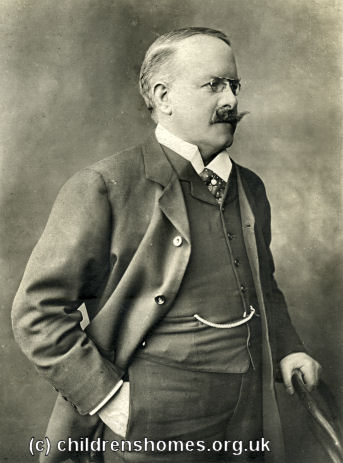The Barnardo Story
Barnardo's Goes National
Prior to the 1890s, Barnardo homes were almost exclusively located in and around London, with odd exceptions such as the Jersey home, a property which had been donated to the organisation.
This changed in 1892 with the opening of seven "Ever Open Door" shelters at Bath, Cardiff, Edinburgh, Leeds, Liverpool, Newcastle upon Tyne and Plymouth. Over the next ten years, a similar number were gradually opened in other major centres such as Bristol, Birmingham and Belfast. The Edinburgh home was fairly short-lived — Barnardo's explicit policy of proselytising all his children into the Protestant faith made the home's presence in the city less than welcome in Roman Catholic quarters.
As well as the Ever Open Doors, a number of provincial branch homes were gradually established including those at Exeter (1894), Epsom (1896), Cambridge (1897), Stockton-on-Tees (1899), Northampton (1902), Southampton (1902), Swansea (1902), Fakenham (1903) and Middlesbrough (1903).
In addition to these general homes, others were set up to provide a particular forms of care. These included Babies' Castle (1884, for babies and the under-sixes), Felixstowe seaside home (1886, convalescents), Sheppard House, Bow (1887, physically disabled boys); The "Beehive", Hackney (1889, girls' rescue/training home); the Jones Memorial Home, Southport (1894, physically disabled); Home for Incurables, Bradford (1898, the physically disabled), and the Mare Street Home, Hackney (1900, deaf, dumb, blind). In 1902, the opening of the Watts Naval Training School at Dereham in Norfolk remedied Barnardo's long-held desire to operate a boys' naval training ship.
In 1899, Barnardo's growing organisation changed its formal legal status and became incorporated under the terms of the Companies Act of 1890, something that reduced the personal liability of the trustees. Its full name then became "The National Incorporated Association for the Reclamation of Destitute Waifs, Otherwise Known as Dr. Barnardo's Homes" but was usually still known simply as "Dr. Barnardo's Homes".

Thomas Barnardo, early 1900s. © Peter Higginbotham
Except where indicated, this page () © Peter Higginbotham. Contents may not be reproduced without permission.


